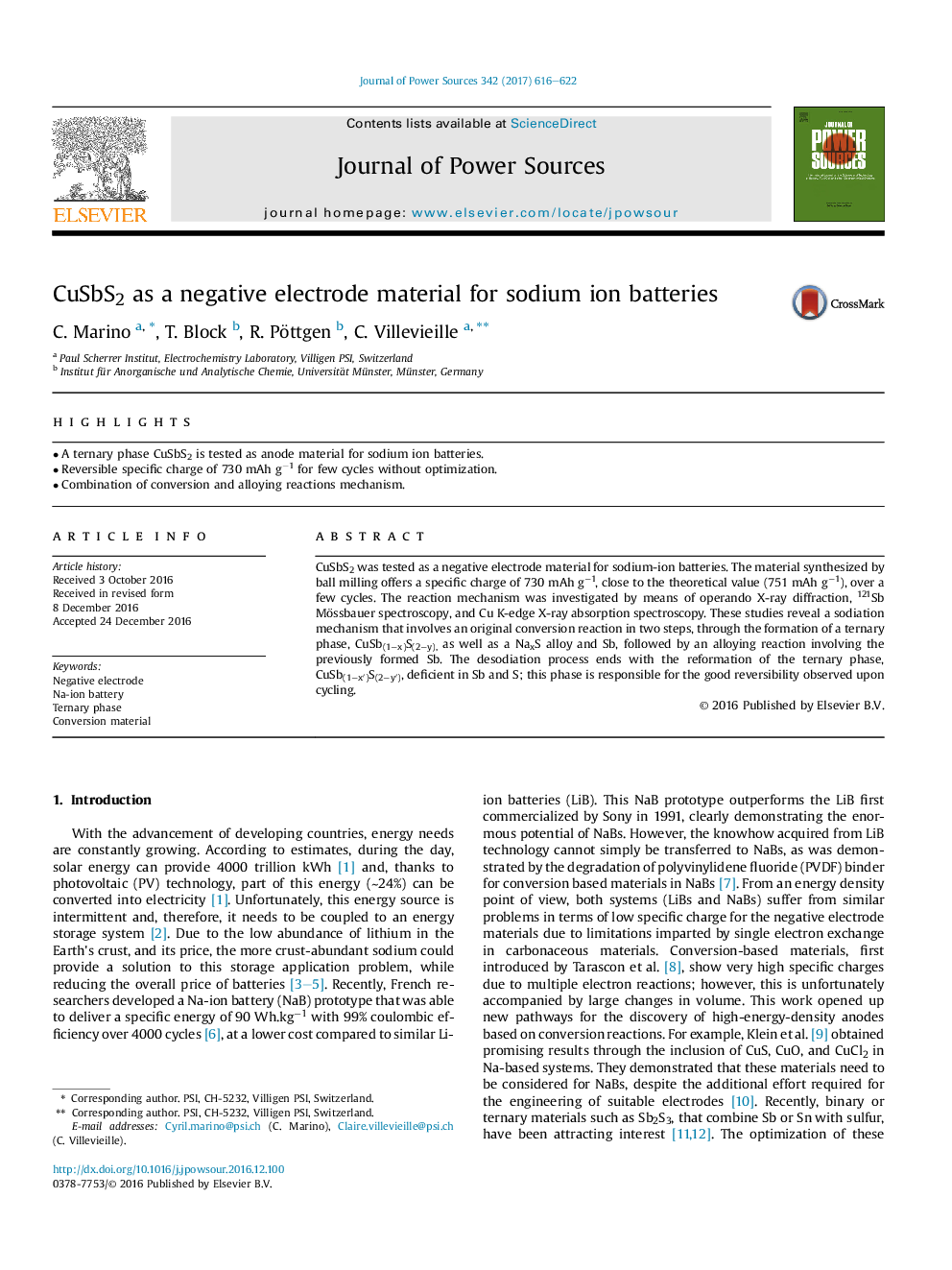| Article ID | Journal | Published Year | Pages | File Type |
|---|---|---|---|---|
| 5149646 | Journal of Power Sources | 2017 | 7 Pages |
Abstract
CuSbS2 was tested as a negative electrode material for sodium-ion batteries. The material synthesized by ball milling offers a specific charge of 730 mAh gâ1, close to the theoretical value (751 mAh gâ1), over a few cycles. The reaction mechanism was investigated by means of operando X-ray diffraction, 121Sb Mössbauer spectroscopy, and Cu K-edge X-ray absorption spectroscopy. These studies reveal a sodiation mechanism that involves an original conversion reaction in two steps, through the formation of a ternary phase, CuSb(1âx)S(2ây), as well as a NaxS alloy and Sb, followed by an alloying reaction involving the previously formed Sb. The desodiation process ends with the reformation of the ternary phase, CuSb(1âxâ²)S(2âyâ²), deficient in Sb and S; this phase is responsible for the good reversibility observed upon cycling.
Related Topics
Physical Sciences and Engineering
Chemistry
Electrochemistry
Authors
C. Marino, T. Block, R. Pöttgen, C. Villevieille,
